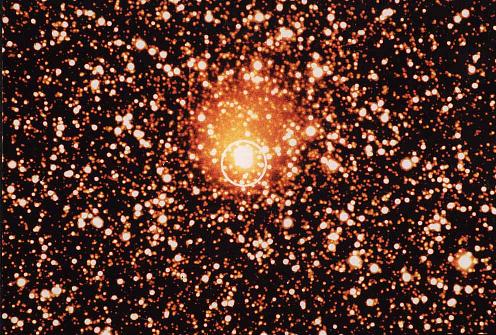
|
| Comet Hale-Bopp |
|---|

|
| Comet Hale-Bopp |
|---|
Comet Hale-Bopp is the most promising comet of all, in so far as submillimeter observations are concerned. It was discovered relatively far from the sun, at about 7 AU, and was already a prominent optical target. Soon after discovery, carbon monoxide (CO) was discovered and found to be the likely cause of the brightness and "activity" responsible for the early discovery. CO has continued to be a prime molecule for monitoring the activity in Hale-Bopp on its long fall towards perihelion.Other gases are routinely observed with the JCMT, including species of low abundance that were either weakly detected, or not detected at all, in previous comets. The brightness of Hale-Bopp is one of the two factors making our detailed submillimeter work possible. The other is the accuracy of the orbit, which allows us to blind-point at the comet within about 1 arcsecond and all without the benefit of optical finders. In this respect, Hale-Bopp is much better than C/Hyakutake which, although bright, was discovered only shortly before its brightest phase and therefore had inferior orbital elements and ephemerides.
Comet Hale-Bopp is without doubt the brightest and most scientifically rewarding comet ever studied in the millimeter to submillimeter wavelength regime.
| Carbon Monoxide | Hydrogen Cyanide | Other Molecules |
|---|
| Submillimeter | Jewitt |
|---|
© Please do not reproduce Hale-Bopp figures without written
permission from the owners
David Jewitt or
Henry Matthews
Last Updated March 1997